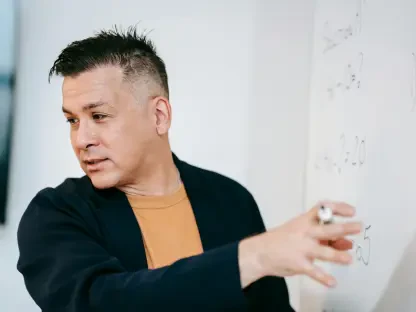As the new school year kicks off, a significant trend is emerging in the educational landscape across the United States, with 17 states and the District of Columbia introducing new cellphone restrictions in schools, bringing the total to 35 states with such policies in place. This rapid policy shift underscores a mounting concern among educators, lawmakers, and parents about the pervasive influence of smartphones on students’ academic performance, mental health, and social interactions. From comprehensive bans that span the entire school day to more targeted rules limited to classroom hours, these measures are fundamentally altering the way technology integrates into the learning environment. The motivations behind these restrictions are multifaceted, driven by a desire to minimize distractions and foster a healthier school atmosphere. This growing movement raises critical questions about balancing technology’s benefits with its potential drawbacks in educational settings, setting the stage for a deeper exploration of the reasons, variations, and implications of these policies.
Addressing Distractions and Well-Being
A key factor propelling the wave of cellphone bans in schools is the increasing recognition of their detrimental impact on both academic focus and mental health. Many educators and policymakers argue that constant notifications, social media scrolling, and gaming during school hours significantly disrupt students’ ability to concentrate on lessons. Beyond mere distraction, there are also serious concerns about the role of smartphones in exacerbating anxiety, depression, and cyberbullying among young people. Studies and anecdotal evidence suggest that unchecked phone use can contribute to a decline in emotional well-being, prompting officials to act. In places like Louisville, Kentucky, students have reported that limiting phone access during instructional time has created a more focused classroom environment, enabling teachers to engage more directly with their pupils. This shift is seen as a necessary step to reclaim attention and prioritize learning over digital interruptions.
Another dimension to this concern is the broader societal push to address mental health challenges among youth, with smartphones often identified as a contributing factor. The pressure to stay connected online, coupled with exposure to idealized images and negative interactions on social platforms, can weigh heavily on students’ self-esteem and emotional stability. Policymakers across various states have cited these issues as central to their decision to impose restrictions, viewing schools as critical spaces to shield students from such pressures during formative years. While not all agree on the extent to which phones are to blame, the consensus among many stakeholders is that reducing screen time in educational settings can help cultivate healthier habits and improve overall student well-being. This perspective is driving legislative action, as authorities seek to create environments where learning and personal growth take precedence over digital engagement.
Diverse Implementation Strategies
The approach to cellphone restrictions varies considerably across the 35 states that have adopted such policies, reflecting differing educational philosophies and governance structures. In 18 states and the District of Columbia, strict “bell-to-bell” bans prevent students from using their devices throughout the entire school day, aiming for a complete disconnection during school hours. Conversely, states like Georgia and Florida apply comprehensive bans only to younger students in kindergarten through eighth grade, with more lenient rules for high schoolers, acknowledging developmental differences. Other regions limit restrictions to instructional periods, permitting phone use during lunch or breaks, while some states delegate policy-making to local districts, trusting them to tailor rules to community needs. This diversity highlights the complexity of implementing a one-size-fits-all solution in a nation with varied educational priorities.
Beyond the scope of bans, the enforcement mechanisms also differ, adding another layer of variation to these policies. Schools in some areas require students to store phones in magnetic pouches or designated lockers upon arrival, ensuring compliance through physical barriers. In contrast, other districts rely on teacher oversight or honor systems, which can lead to inconsistent application of rules. These differences in enforcement often stem from resource availability and local attitudes toward technology in education. While the overarching goal remains the same—to reduce distractions and enhance learning—the patchwork of approaches underscores the challenge of balancing uniformity with flexibility. As states continue to refine their strategies, the effectiveness of these varied implementations will likely influence future policy decisions, shaping how technology is managed in schools nationwide.
Navigating Stakeholder Responses
The introduction of cellphone bans has elicited a spectrum of reactions from students and parents, reflecting both adaptation and apprehension. Many students initially resist these rules, feeling disconnected from their social circles and personal entertainment, as highlighted by a high school junior from suburban Atlanta who misses using her phone for casual updates during the day. However, over time, some have begun to appreciate the reduction in classroom distractions, noting an improved ability to focus on lessons. The adjustment to new routines, such as surrendering devices at the start of the day, represents a significant cultural shift for a generation accustomed to constant connectivity. Despite the challenges, there are signs that these policies are gradually becoming normalized as students adapt to a less digitally dominated school experience.
Parents, meanwhile, present a more nuanced perspective, balancing support for limiting distractions with concerns about safety and communication. Many express unease about losing immediate contact with their children, particularly in light of potential emergencies like school threats or conflicts. A parent from the same Atlanta suburb emphasized the importance of being able to reach her child quickly, highlighting a broader worry among families about delayed updates during crises. While generally in favor of reducing phone-related disruptions, parents advocate for a seat at the table in policy discussions, pushing for solutions that address safety concerns, such as improved emergency communication protocols. Their input underscores the need for policies that not only curb technology’s negative effects but also ensure that essential lines of contact remain accessible when needed most.
Educator Insights and Initial Impacts
Educators across the affected states have largely embraced cellphone restrictions, citing noticeable improvements in classroom dynamics as a primary benefit. Teachers report fewer interruptions from notifications or covert texting, which previously undermined lesson delivery and student engagement. Beyond reducing distractions, some have observed an uptick in face-to-face interactions among students during breaks, fostering a sense of community often eroded by screen time. A researcher from Emory University, studying the effects in a district near Atlanta, noted that hallways and cafeterias are becoming spaces for real conversations rather than silent scrolling. These early observations suggest that bans may contribute to a more connected school culture, even as educators remain mindful of the need to adapt teaching methods to a less tech-reliant environment.
However, while the initial feedback from educators is promising, there is a cautious acknowledgment that the full impact of these bans is yet to be determined. Questions linger about whether reduced phone use will translate into measurable gains in academic performance or declines in disciplinary issues. The same researcher pointed out that while the atmosphere in schools appears more focused, concrete data on grades, behavior, or mental health outcomes is still pending. Teachers also face the challenge of enforcing these rules consistently, particularly in schools lacking the resources for strict monitoring systems. As schools navigate this transition, educator insights will play a crucial role in evaluating the efficacy of cellphone restrictions, providing valuable feedback for refining policies to maximize their benefits while addressing any unintended consequences.
Political Consensus and Research Gaps
The momentum behind cellphone bans is bolstered by rare bipartisan support, with lawmakers from politically diverse states uniting over the need to limit phone use in schools. Legislators in places like California and Florida have championed these restrictions, viewing them as a commonsense approach to enhancing educational outcomes and student well-being, a sentiment echoed by a Georgia state representative who noted the broad public backing for such measures. This cross-party agreement reflects a shared recognition of the challenges posed by unchecked smartphone use, positioning cellphone bans as a unifying issue in an often divided political landscape. The swift adoption of these policies across 35 states signals a strong legislative commitment to addressing technology’s role in education.
Yet, not all states align with this trend, and significant research gaps temper the enthusiasm for widespread bans. In states like Wyoming and Michigan, resistance to state-level mandates prevails, with a preference for local control over uniform policies, highlighting a tension between centralized authority and community autonomy. Simultaneously, the academic community urges caution, pointing to the lack of definitive evidence linking phone use to specific mental health or academic outcomes. A Georgia Tech researcher emphasized the need for more nuanced studies to distinguish between harmful and beneficial digital interactions, suggesting that blanket bans may overlook potential positive uses of technology. As the debate continues, bridging these research gaps and reconciling differing governance approaches will be essential to crafting policies that effectively balance restriction with innovation.
Reflecting on a Shifting Educational Landscape
Looking back, the swift implementation of cellphone bans in schools across 17 additional states and the District of Columbia marked a pivotal moment in addressing the challenges posed by pervasive technology in education. The diverse reactions from students, parents, and educators, coupled with varying policy approaches, painted a complex picture of adaptation and concern. While bipartisan political support underscored a collective will to act, opposition in some regions and unresolved research questions reminded stakeholders of the intricacies involved. Moving forward, the focus should shift toward gathering robust data on the long-term effects of these restrictions, ensuring policies evolve based on evidence rather than assumption. Schools must also prioritize developing comprehensive safety communication systems to address parental concerns, while fostering environments that encourage meaningful engagement over digital distraction. This ongoing journey offers an opportunity to redefine how technology integrates into education, striving for a balance that nurtures both learning and well-being.









